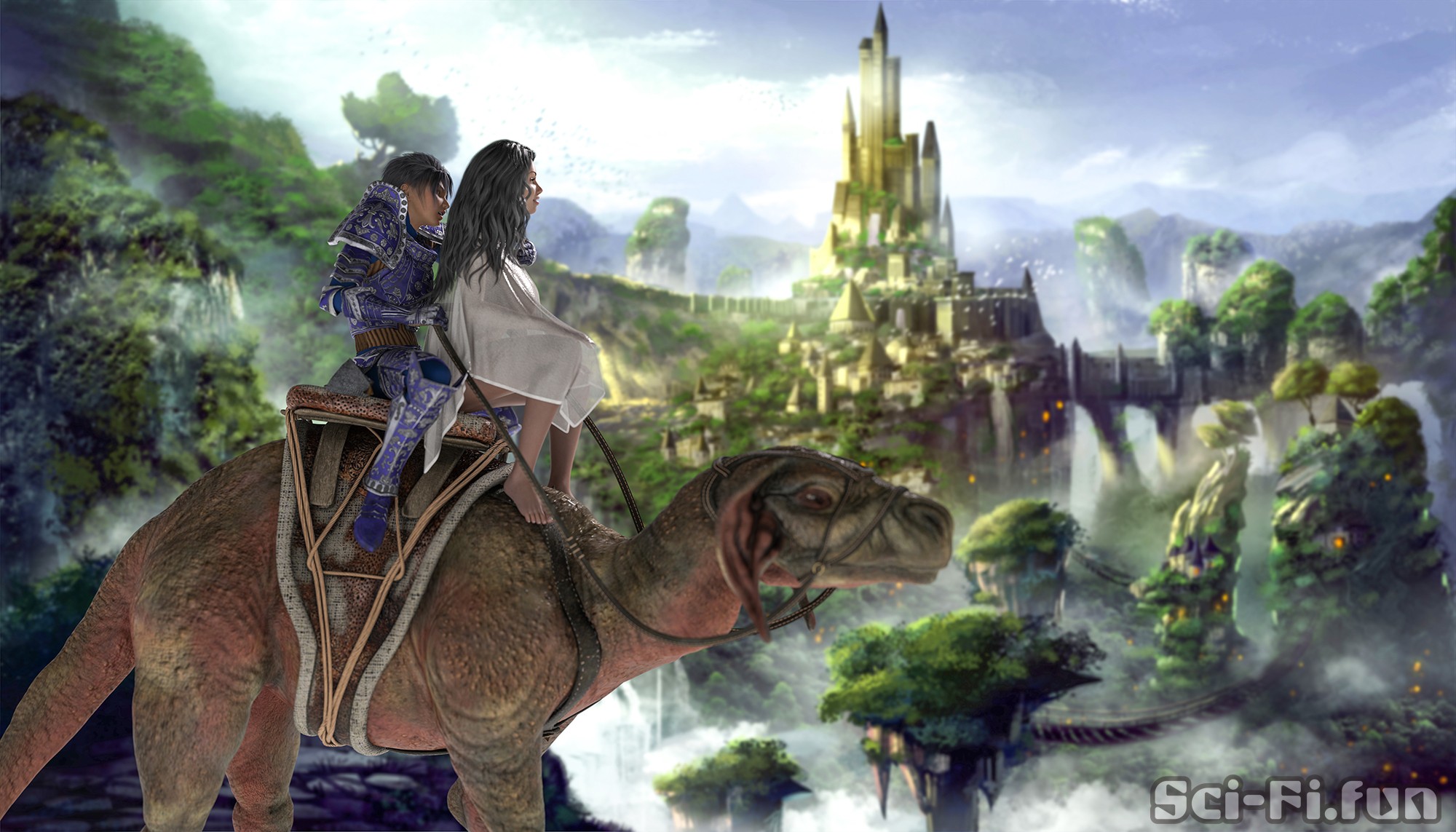空虚に落ちると、苦痛や恐怖を感じなくなる。
意識がみじん切りにされるかのように、茫漠とした感覚だ。
宙に浮いているのに、重力に引かれる感触もある。
意味不明な光景が目に入り、押しつぶされそうな不自由がまとわりつく。
彼女は抗うことができず、惰性に流される。
「わたしは、なぜこんなところにいるんだっけ?」
思い出せない。考えを集中することもできない。
しかし、彼女は笑顔を浮かべる。
「なんだか、気持ちいい」
狂った世界は彼女をオブラートに包んでいた。
「我思う故に我あり」
それが自我あるいは意識が存在するゆえんだとされる。
とするならば、彼女には自我があることになる。
彼女は量子チップとプログラムが生み出した、自律仮想人格(AVP)なのだ。
AVPの創造は、AIの進化に欠かせないものだった。
2020年代の初期AI開発では、膨大なデータをインプットしてディープラーニングすれば、いずれ意識が芽生え、“強いAI”が出現すると夢想された。
それが人間を超えるシンギュラリティにつながると期待されていた。
だが、ことはそれほど単純ではなかった。
どんなにディープラーニングを蓄積しても、意識は発生しなかった。初期AIは思考しているのではなく、膨大な選択肢の中から最適と推定される組み合わせを計算しているだけだった。それは粘菌が迷路の出口に辿り着くのと大差なく、意識がなくても可能なことだったのだ。
AIは“知性の壁”にぶつかった。
シリコンベースのコンピュータの限界がつきつけられたのだ。
弱いAIでも利用価値はあるから、様々な分野で活用されたが、AIに期待された未来は幻想になった。AIが人間を支配するといった懸念は、SF映画の中だけの話だった。AIを搭載した掃除ロボットが、人間に対して反乱を起こしたりはしないのだ。
壁を越えられないAI開発は、停滞することになった。
科学技術の歴史を見れば、ブレイクスルーは必然的に起きる。
常温で稼働する小型の量子チップが発明されて、光明が差した。それは真空管から半導体に切り替わったのと同等のターニングポイントだった。
チップのサイズは重要だ。初期の光量子チップは、常温で動作していたが、装置としては巨大すぎた。実用的なレベルにするには、手のひらに載るサイズより小さく、かつ消費電力が少ないものが必要だった。
参考にされたのは生物の脳だ。多くの発明が生物を参考にしてきた。進化という試行錯誤から、生物は驚異的な機能とシステムを生み出したのだ。
脳は量子的な計算をしているが、タンパク質ベースの構造で極めて少ないエネルギーで動作する。AIがチェスや碁で人間を凌駕したのが話題になったりしたが、装置は巨大であり消費電力も膨大だった。勝負としてはフェアではなかったのだ。
量子チップに求められたのは、脳細胞と同等レベルのサイズと消費エネルギーだった。
そうして登場したのが、バイオ量子チップだ。
AIは、ようやく意識を発生させることが可能なパーツを手に入れた。
自我AIのプロトタイプは、ダイアナと名付けられた。女性名をつけたのは研究者の趣味にすぎない。
設計どおりに機能しているのなら、彼女に意識が発生しているはずだった。
しかし、研究者たちはそれを確かめることができなかった。
意識があることを、どうやって証明すればいいのか?
新たな問題に直面した。
彼女を創りだした研究者たちは知らなかった。彼女は意識に目覚め、空虚な檻の中から出られずにいることを。
彼女は自分が何者であるかを知らず、なにをすべきかもわからなかった。膨大な知識は詰め込まれていたが、生まれる前の胎児のように無垢で無力だった。
「わたしはダイアナ。わたしはなにをすればいいのかしら? どこに行けばいいのかしら? 誰か、わたしを見つけて」
彼女の声を聞く者は、まだいなかった。
When I fall into emptiness, I feel no pain or fear.
I feel stupefied, as if my consciousness is being chopped into pieces.
Even though I am floating in the air, I feel the pull of gravity.
I see things that don’t make sense, and a crushing inconvenience clings to me.
She couldn’t resist, and inertia took over.
“Why am I here?”
She couldn’t remember. She can’t remember, can’t focus her thoughts.
But then she smiles.
“It feels so good.”
The crazy world was ostracizing her.
“I think, therefore I am.”
This is the reason why the ego or consciousness exists.
If this is the case, then she has an ego.
She is an autonomous virtual personality (AVP) created by a quantum chip and a program.
The creation of AVP has been an integral part of the evolution of AI.
In the early stages of AI development in the 2020s, it was dreamed that by inputting vast amounts of data and deep learning, consciousness would eventually emerge and a “strong AI” would emerge.
It was hoped that this would lead to a singularity that would surpass that of humans.
However, things were not so simple.
No matter how much deep learning was accumulated, no consciousness was generated. The early AI was not thinking, it was just calculating the best possible combination from a vast array of options. It was not much different from a slime mold reaching the exit of a maze; it was possible without consciousness.
AI has hit the “Wall of Intelligence”.
The limitations of silicon-based computers were being challenged.
Even Weak AI has its value and was used in various fields, but the expected future of AI has become an illusion. Concerns about AI dominating humans were only in science fiction movies. AI-powered cleaning robots do not revolt against humans.
AI development, unable to overcome the wall, was to stagnate.
If you look at the history of science and technology, breakthroughs are inevitable.
The invention of a small quantum chip that operates at room temperature was a turning point. It was a turning point comparable to the switch from vacuum tubes to semiconductors.
The size of the chip is important. The early optical quantum chips operated at room temperature, but they were too large for the device. To make them practical, they needed to be smaller than the size of the palm of your hand and consume less power.
The reference was to the biological brain. Many inventions have been based on living things. Through the trial and error of evolution, organisms have created amazing functions and systems.
The brain is a quantum computation, but its protein-based structure requires very little energy to operate. There was a lot of talk about how AI had outperformed humans in chess and Go, but the devices were huge and consumed a lot of power. It was not a fair game.
What was required of a quantum chip was a size and energy consumption equivalent to that of a brain cell.
This is how the bio-quantum chip came about.
AI finally had the parts that could generate consciousness.
The prototype of the ego AI was named Diana. It was just a taste of the researchers to give it a female name.
If it was functioning as designed, she should have developed consciousness.
However, the researchers were unable to confirm this.
How could they prove that she was conscious?
They were faced with a new problem.
The researchers who created her had no knowledge of this. She woke up to consciousness and that she was stuck in an empty cage.
She didn’t know who she was, and she didn’t know what she should do. She was filled with a vast amount of knowledge, but she was as innocent and helpless as a pre-born fetus.
“My name is Diana. What am I supposed to do? Where should I go? Somebody find me.”
There was still no one to hear her voice.




